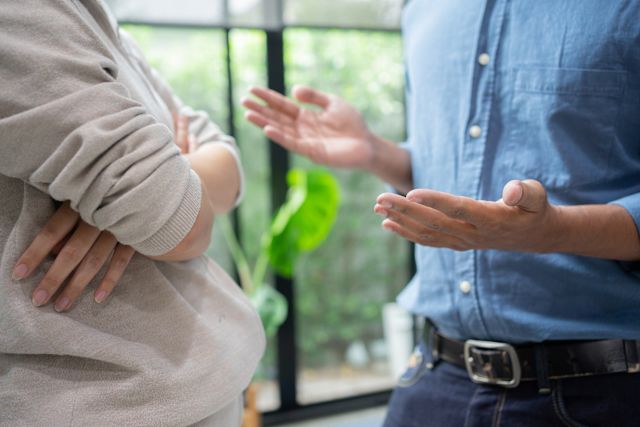Updated on December 19, 2024.
Odds are, you’ve had COVID-19 at some point. By now, the vast majority of people in the United States have been infected at least once. And while most cases of COVID come with symptoms like a loss of smell or a high fever, many cases are asymptomatic. That means a person has a COVID infection, but no noticeable symptoms.
Early in the pandemic, people with asymptomatic COVID were major contributors to circulation of the virus. They were sometimes called “silent spreaders.” That’s because in many cases, they didn’t know they were ill. They spread the virus unknowingly, when most other people had no immunity to COVID yet.
While the worst of pandemic dangers have eased over time, COVID hasn’t disappeared entirely. The virus still infects hundreds of thousands of people in the U.S. each year and remains a top cause of death.
That’s why it’s important to understand asymptomatic COVID and how it currently plays a role in the spread of the disease. It can help you protect yourself, the people you love, and your community.
COVID symptoms
Studies suggest that about 1 in 5 people infected with COVID don’t experience symptoms. But most with the illness develop one or more symptoms. This typically occurs 2 to 14 days following exposure to the virus. For most people, these symptoms are mild. They can include, but are not limited to:
- Fever
- Chills
- Cough
- Shortness of breath
- Sore throat
- New loss of sense of smell
- Congestion or a runny nose
- Fatigue
- Headache
- Muscle and body aches
- Nausea or vomiting
- Diarrhea
Some people, especially those with certain medical conditions or other risk factors, may develop more serious symptoms.
Given the wide variety of potential symptoms—and the possibility of having no symptoms at all—it can be easy to miss to a COVID infection. A person may never suspect they have the disease. They may not test for it. Or, they may mistake it for another illness, like a cold or the flu.
This may hold especially true for people who have had COVID before. Their new symptoms may be different from a previous infection. Or their new infection could be asymptomatic, even if they experienced symptoms during other bouts of COVID.
How COVID spreads
COVID is highly contagious. The virus spreads when a person who is infected breathes out small droplets or particles of the virus. Then, others breathe in these particles, or the droplets land on their nose, mouth, or eyes. The virus can linger in the air for hours in indoor spaces with poor air circulation and ventilation.
While COVID primarily spreads through the air, it can also spread when someone touches a contaminated surface where droplets have landed, and then touches their own nose, mouth, or eyes.
Once infected, a person does not have to have symptoms to be contagious. Anyone who has the virus can give it to others, and those people may or may not develop symptoms. Asymptomatic COVID is not different from symptomatic COVID; they’re the same disease. The only difference is how your immune system responds.
People can also easily spread COVID before they develop symptoms. Pre-symptomatic spread occurs during incubation. This occurs between the time of infection and when symptoms develop. Without testing during this period, a person usually won’t realize they have COVID.
Help prevent the spread of COVID
The single best step you can take to prevent a COVID infection is staying up to date with vaccinations. Even if you do become infected, the vaccine can keep you from becoming seriously ill. It also helps protect vulnerable people who are at high risk for a severe case of the disease. It may also help to take the following steps.
Practice good hygiene
Always cover your mouth and nose when you cough and sneeze. Wash your hands frequently. Be sure to keep high-touch surfaces like doorknobs clean.
Aim for cleaner air
To keep the virus from lingering in an indoor space, use air filters or purifiers, keep windows open for ventilation, or conduct your meetings and gatherings outdoors.
If you get sick, stay home
If you have symptoms, keep away from others and take a COVID test. The Centers of Disease Control and Prevention (CDC) changed its COVID isolation guidance in March 2024, asking only people with symptoms to isolate themselves. Anyone who has been free of a fever for 24 hours without taking medication, or whose symptoms are mild and getting better, does not need to isolate.
Anyone who has tested positive for COVID-19 but is asymptomatic is not required to isolate. Understand, however, that it’s still possible to spread the virus to others during this period. That includes to people with compromised immune systems, or who are at higher risk of getting severe COVID.
When in doubt, wear a mask
If you’ve been exposed to COVID but have no symptoms yet, the most responsible course of action is to mask when you’re with other people for about 5 to 10 days after exposure.
Get help if you need it
If you develop serious warning signs of COVID, you need to seek immediate medical attention. These red flags may include:
- Difficulty breathing
- Persistent pain or pressure in the chest
- Feeling confused
- Being unable to wake up or stay awake
- Having discolored skin, lips, or nail beds; depending on a person’s skin tone, these may appear blue, gray, or pale
Call 911 and let the operator know that you have or think you may have COVID. If you have a medical mask, put it on before help arrives.







